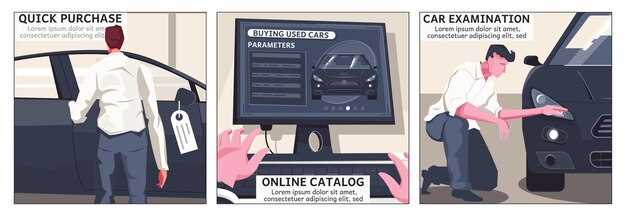
The Constant Velocity (CV) axle is a critical component in the drivetrain of front-wheel drive and all-wheel drive vehicles. It plays a vital role in transferring power from the engine to the wheels while allowing for the flexibility needed during turns. However, like any mechanical part, CV axles can wear out over time due to various factors including age, driving conditions, and lack of maintenance. Recognizing the warning signs of a failing CV axle can save drivers from experiencing more serious and expensive issues down the road.
Common symptoms of a malfunctioning CV axle include clunking noises, especially when turning, and visible signs of grease leaks near the axle joints. Drivers may also experience vibration during acceleration, or feel a change in handling, indicating that the axle may be compromised. Ignoring these signs can lead to complete axle failure, which could result in loss of control of the vehicle, making it crucial to address any suspicious behavior immediately.
In this article, we will explore in detail the specific warning signs of a failing CV axle, helping vehicle owners understand when it’s time to seek professional assistance. Awareness of these issues not only ensures the safety of the driver and passengers but also contributes to the longevity of the vehicle’s overall performance.
Unusual Noises Indicating Axle Issues
Unusual noises from your vehicle can serve as important indicators of potential issues with the CV axle. It’s essential to recognize these sounds early to prevent further damage and costly repairs. Here are key noises to watch for:
- Clicking or Popping Sounds:
This noise often occurs when turning or maneuvering at low speeds. It typically indicates that the constant velocity joints are worn out or damaged.
- Grating or Grinding Noises:
If you hear a grinding sound while driving, it may signal that the CV joint’s lubricant has leaked or is insufficient. This can lead to further deterioration of the axle.
- Banging Noise:
A banging sound, particularly when driving over bumps or uneven surfaces, indicates that internal components of the axle may be loose or damaged.
- Humming or Whirring Noise:
This type of sound can suggest issues with the bearings or other critical axle components. It may become more pronounced during acceleration or deceleration.
Each of these noises can point to varying degrees of axle damage. If you experience any of these sounds, it is advisable to have your vehicle inspected by a qualified mechanic as soon as possible. Prompt attention can help avoid more severe complications and ensure safety on the road.
Vibrations Felt During Acceleration

Experiencing vibrations during acceleration can be a clear indication of issues with your vehicle’s CV axle. These vibrations often manifest as a shaking or shuddering sensation that becomes more pronounced as you increase speed or pressure on the accelerator. The sensation may vary from mild to intense, depending on the severity of the underlying problem.
One common cause of vibrations is a damaged or worn CV joint, which is responsible for transmitting power from the engine to the wheels while allowing for movement and flexibility. When the joint becomes compromised, it can cause imbalance, leading to noticeable vibrations. Additionally, a torn boot may allow dirt and debris to enter the joint, exacerbating wear and increasing the chances of vibration.
Another factor to consider is the alignment and balance of the axle itself. If the axle is misaligned or if the weights have shifted, it can create a situation where the components do not rotate evenly. This imbalance can cause significant vibrations, especially during acceleration, as the system is put under more stress.
Moreover, issues with associated components like the transmission or driveshaft can also lead to vibrations. A failing transmission can affect how power is delivered to the wheels, resulting in irregularities felt in the cabin as vibrations during acceleration. It is crucial to pay close attention to these signs, as ignoring them can lead to further damage and more costly repairs.
In summary, if you notice vibrations during acceleration, it is essential to have your vehicle inspected promptly. Early diagnosis and repair of CV axle issues can prevent further damage and ensure safer driving conditions.
Difficulty Making Turns and Steering

One of the critical warning signs of a failing CV axle is experiencing difficulty when making turns and steering. This issue often manifests as resistance when turning the steering wheel or a noticeable delay in the vehicle’s response to steering inputs. Such symptoms may indicate that the axle joints are wearing out or that there is a problem with the bearings.
When a CV axle begins to fail, it may cause vibrations that become pronounced during cornering. These vibrations can originate from worn joints or an imbalance in the axle itself, making the vehicle feel unstable. Furthermore, a failing CV axle can also lead to increased steering effort; drivers might find themselves exerting more force than usual to navigate turns, which can be especially problematic during sharp maneuvers.
Another sign to watch for is a clicking or popping noise when turning. This sound typically indicates that the internal components of the CV joint are damaged or excessively worn. Ignoring these signs can lead to more significant issues, potentially compromising the vehicle’s handling and safety.
If you notice any of these symptoms, it is crucial to have your vehicle inspected by a professional mechanic. Timely diagnosis and repair can prevent further damage and ensure safe driving conditions.


